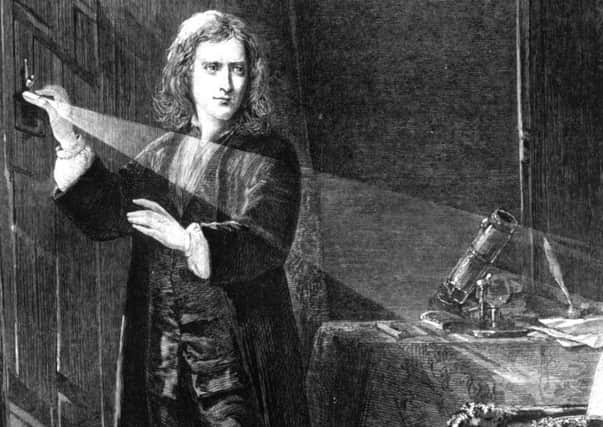Book review: The Newton Papers by Sarah Dry


The Newton Papers by Sarah Dry
Oxford University Press, £19.99
The truth, inevitably, was somewhat messier. Sarah Dry’s history of what happened to the mass of Newton’s papers – a staggering ten million words – is also a brilliant biography of Newton and how his reputation has changed over the centuries. Rather like the wonderful The Trouble With Tom by Paul Collins – a biography of Paine structured around what happened to his bones – this is both a life and an afterlife. It brings in John Maynard Keynes and David Brewster (best known as the inventor of the kaleidoscope despite his other achievements), Abraham Yehuda, a friend of Einstein who was a significant figure in Zionism, and the ninth Earl of Portsmouth, who, faced with divorce payments on account of his “indiscretion [that] has been so reckless as to make you a danger to the institution, for the protection of which you enjoy hereditary privileges”, put the papers on the market.
Gravity and the inverse square law, yes. Falling apple on the noggin, never mentioned. Calculus, yes, but Leibnitz probably got there first. But the papers also reveal a man obsessed with alchemy, who worries and niggles over the dimensions of Solomon’s Temple, and who, as Master of the Mint, goes incognito into bars to check whether or not the coinage is counterfeit.
Advertisement
Hide AdWhen he died at 84 – an enviable age for a man born before the Plague and the Fire of London – Newton left behind featherbeds, “chymical glasses”, walnut cabinets, a “cheese toaster”, “one brown teapot”, and, amongst other things, “twenty-six copies of English medals in plaister of Paris”, presumably, Dry notes, of himself. His library was valued at the modern equivalent of £23,000. Having left no will, the papers passed to his half-sister’s daughter’s husband, John Conduitt, and started their bizarre peregrinations through private hands and intellectual history.
Those privileged enough to see the papers in the coming centuries had to confront a slightly thorny dilemma. The morning star of the Enlightenment was also, to be frank, a cranky nutjob. Some papers were older papers rewritten with minimal alteration; the majority of them were about matters biblical and alchemical rather than scientific or economic; and his correspondence revealed a petulant, vindictive man. The French writer, Jean-Baptiste Biot, came up with an ingenious solution: in 1693, it was known, Newton had had some kind of breakdown at the age of 51. The mathematical genius was his early brilliance, the nonsense about the chronology of the world and the date of the apocalypse was his latter babblings. It was neat, though it was not true.
Dry tracks the pages, not the mind of Newton, and finds ample anecdotes along the way to make this bibliographic thriller a delight to read. It will make even the most au fait reader say “Crikey”. But it leaves a hole in the head that my brain scrabbles to fill. What was the 1693 breakdown? Given the portraits of a lean, Roman-nosed and high-cheeked man, why did Newton not marry? He was evidently both spiteful and ambitious, but also otherworldly and a genius. Dry gives us chinks into the mind, but not the mind itself. She should write a full biography of Newton.
In between, we get the rapacious and the ghastly, the informed and the acquisitive, the cultured and the needy, all of whom think that there might be something in these papers which is either “magickal” or esoteric or a trump to their opponents. Dry has a wry raised eyebrow throughout this story of the manuscripts. Every owner had an agenda (financial or philosophical). Newton’s papers are not a trove of truth, but an insight into a mind, however conflicted and contrary that might be.
But this book is about his “foul papers”, passed from inheritor to zealot and scientist to speculator, and Dry’s narrative is compelling, especially when it embraces this confusion. “We see them for what they are: not a single story but a mass of intersecting stories. This kind of thinking veers into uneasy territory, where instability trumps fixed meanings and multiplicity beats singularity. It is an uncomfortable place to be. For some, it is also the only honest ground on which to stand”. Those words should be graven above every writer’s door.